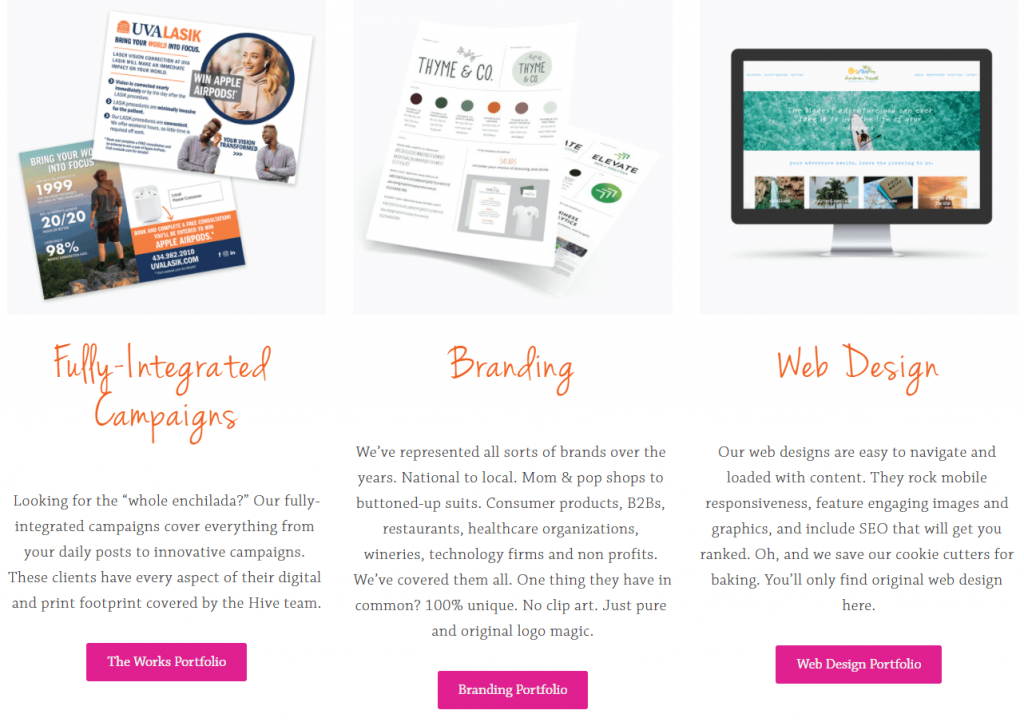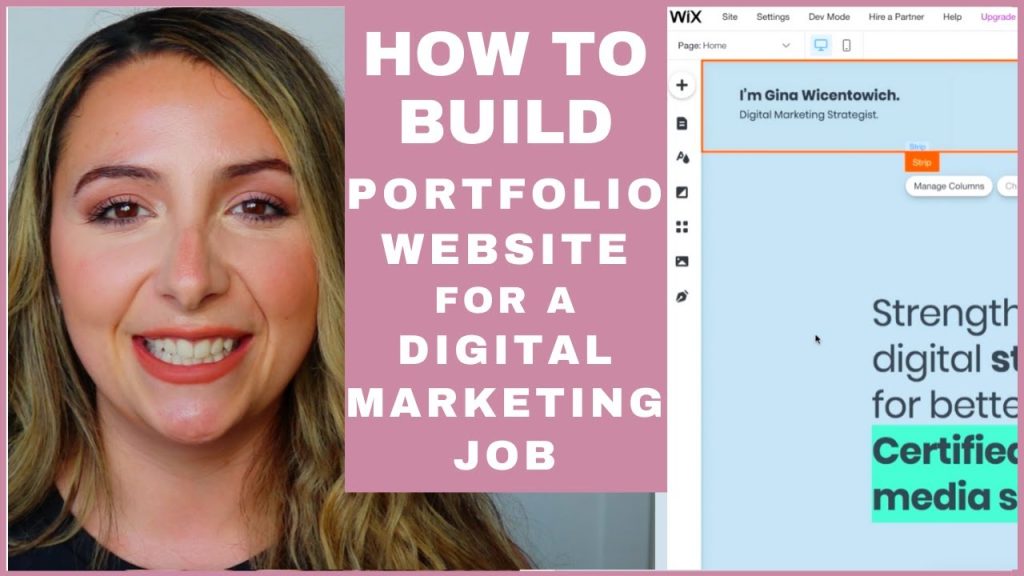Creating a digital marketing portfolio involves showcasing your best work and detailing successful campaigns. Start by selecting your most impactful projects and results.
In today’s digital landscape, an impressive portfolio is your ticket to standing out in the crowded field of digital marketing. It’s not just a collection of past projects; it’s a testament to your skills, creativity, and results-driven mindset. Whether you’re a seasoned professional or just starting out, your portfolio is a dynamic tool that speaks to your expertise in SEO, content creation, social media management, and more.
It should be visually appealing, easily accessible online, and updated regularly to reflect your growing experience. Your portfolio is your personal brand’s story, told through the lens of the campaigns that have benefited from your unique touch. It’s the first thing potential employers or clients will scrutinize, so make it count.
Introduction To Digital Marketing Portfolios
Digital marketing portfolios show your skills and projects.
They tell everyone what you can do. Like a digital showcase.
Why A Portfolio Matters For Digital Marketers
- Shows your work: See what you’ve done.
- Wins trust: People believe your skills.
- Gets jobs: More people want to hire you.
Key Components Of A Strong Portfolio
- Your Bio: Tell who you are. Keep it short.
- Skills List: What can you do? List everything.
- Best Projects: Show your top work. Use pictures.
- Results Achieved: Numbers matter. Share big wins.
- Testimonials: Happy clients? Share their words.
- Contact Info: Make it easy to reach you.
Getting Started: Planning Your Portfolio
Creating a digital marketing portfolio showcases your skills and experience. It’s an essential tool for job seekers, freelancers, and agencies. A well-planned portfolio sets you apart in the competitive digital marketing landscape. Let’s dive into planning your portfolio with clear goals and a defined target audience.
Setting Your Portfolio Goals
Before adding content, define what you want to achieve with your portfolio. Goals guide your content and design choices, ensuring your portfolio aligns with your career aspirations.
- Gain employment: Tailor your portfolio to appeal to hiring managers.
- Attract freelance clients: Highlight successful campaigns and client testimonials.
- Build your brand: Use a unique style to stand out and express your personal brand.
Identifying Your Target Audience
Understanding your audience ensures your portfolio resonates with them. Consider who will view your portfolio and what they seek.
| Target Audience | What They Look For |
|---|---|
| Hiring Managers | Results-driven campaigns, key metrics |
| Prospective Clients | Testimonials, diverse skill set |
| Peers | Innovative ideas, collaboration evidence |
Choosing The Right Platform
Your portfolio showcases your skills and creativity. Choosing a platform is key. It’s where potential clients get their first impression of your work.
Pros And Cons Of Popular Portfolio Platforms
Different platforms offer unique features. Weigh pros and cons carefully.
| Platform | Pros | Cons |
|---|---|---|
| Behance |
|
|
| Dribbble |
|
|
| WordPress |
|
|
Custom Website Vs. Template-based Solutions
Decide between custom websites and template-based solutions.
| Type | Advantages | Disadvantages |
|---|---|---|
| Custom Website |
|
|
| Template-Based |
|
|

Credit: www.youtube.com
Curating Your Best Work
Building a digital marketing portfolio showcases your skills to potential clients or employers. Select works that highlight your expertise. This section guides you through choosing projects that best represent your abilities. These projects will show your range and the impact of your campaigns.
Selecting Projects That Demonstrate Versatility
A diverse portfolio catches attention. It shows you can handle various marketing challenges. Aim to display a mix of project types. Include SEO, PPC, content marketing, and social media campaigns. This variety will demonstrate your adaptability and breadth of skills.
- SEO campaigns: Show your ability to increase organic traffic.
- PPC projects: Highlight your expertise in paid advertising.
- Content marketing: Display your storytelling and engagement skills.
- Social media strategies: Prove your knack for building communities.
Presenting Case Studies And Campaign Results
Results speak volumes. Include detailed case studies in your portfolio. Focus on campaigns with measurable success. Use graphs and charts to make data easy to digest. This will help potential clients understand the value you bring.
| Project | Goals | Results |
|---|---|---|
| Email Marketing Campaign | Increase subscriber engagement | Open rate grew by 25% |
| SEO Optimization | Boost organic search rankings | 50% traffic increase in 6 months |
| Social Media Outreach | Expand brand presence | Gained 10K followers in 3 months |
Incorporating Testimonials And Reviews
Showcasing client testimonials and performance reviews within your digital marketing portfolio can significantly boost credibility. These real-world endorsements serve as social proof, highlighting your success and expertise to potential clients.
Digital marketing portfolios showcase your skills and successes. Testimonials and reviews add credibility. They tell potential clients about your work ethic and results. This section will guide you through collecting and displaying feedback effectively.
Gathering Client Feedback
Start with satisfied clients. Reach out to them after project completion. Use email surveys or feedback forms. Ask specific questions about their experience. Request permission to use their responses in your portfolio.
- Identify happy clients
- Send out feedback requests
- Use their responses
How To Display Testimonials Effectively
Testimonials should stand out. Place them prominently in your portfolio. Create a dedicated section or use sidebar snippets.
| Method | Description |
|---|---|
| Quotes | Short, powerful client statements |
| Video | Clients speaking about your impact |
| Case studies | Detailed success stories with data |
Use a clean layout and readable fonts. Highlight key phrases in bold. Include client names, titles, and company logos for authenticity.
- Choose a visible section
- Use varied formats
- Emphasize authenticity

Credit: www.strikingly.com
Optimizing Your Portfolio For Seo
Making your digital marketing portfolio shine isn’t just about showcasing your best work. It’s also about ensuring people can find it. This means optimizing your portfolio for SEO is crucial. Let’s dive into how you can do just that.
Keyword Research For Digital Marketing Niches
Before anything, you need to find the right keywords. These keywords should match what your potential clients are searching for. Think about the services you offer, like SEO, social media management, or content creation. Use tools like Google Keyword Planner or SEMrush for this task. Your goal is to list keywords that are both relevant and not too competitive.
- Start with broad terms related to digital marketing.
- Narrow down to specific services you excel in.
- Consider the intent behind the searches.
- Focus on long-tail keywords for better targeting.
Seo Best Practices For Online Portfolios
With your keywords ready, it’s time to apply them. Here are the best practices to follow:
- Use Keywords Strategically: Place them in titles, descriptions, and throughout your content.
- Optimize Images: Use descriptive file names and alt tags for all images.
- Mobile-Friendly Design: Ensure your portfolio looks great on all devices.
- Fast Loading Times: Optimize your site’s speed to keep users and search engines happy.
- Quality Content: Write clear, concise, and engaging descriptions for your projects.
Remember, consistency is key. Keep your portfolio updated with your latest projects and achievements. This not only shows your growth but also keeps your site fresh for return visitors and search engines.
Leveraging Multimedia Elements
In the digital marketing world, a portfolio stands as your visual resume. Leveraging multimedia elements can set you apart. It showcases your creativity and skill.
Using Images And Videos To Enhance Your Portfolio
Images and videos make your portfolio pop. They tell stories. Quick, engaging, and effective stories. Here’s how to use them:
- Showcase your projects: Use high-quality images or short videos of your successful campaigns.
- Before and after: Display the transformation your strategies have achieved.
- Client testimonials: Short video clips or images with quotes can boost credibility.
Remember, each image or video should serve a purpose. It should speak to your skills and success.
Interactive Features That Engage Visitors
Interactive elements keep visitors engaged. They invite visitors to explore your portfolio deeply. Consider these features:
- Clickable slideshows: They allow visitors to view multiple projects quickly.
- Animated graphs: Show the success of your campaigns through animated charts.
- Live project links: Offer a direct look at your live work. It proves your impact.
Interactive features make your portfolio memorable. They encourage visitors to stay longer and explore more.

Credit: rockcontent.com
Updating And Maintaining Your Portfolio
Keeping your digital marketing portfolio updated is crucial. It showcases your latest work, skills, and achievements. A well-maintained portfolio can set you apart in the competitive digital marketing landscape. Let’s explore the best practices for keeping your portfolio fresh and engaging.
When And How To Update Your Portfolio
Regular updates keep your portfolio current. Aim to refresh content every few months or after completing significant projects. Use these steps:
- Add new projects right after completion.
- Remove outdated work that no longer represents your best skills.
- Highlight achievements like successful campaigns or certifications.
- Update your skills list to reflect your growing expertise.
Remember to review your portfolio’s design and functionality. Ensure quick load times and mobile responsiveness.
Keeping Your Content Fresh And Relevant
Content relevancy is key in a portfolio. Follow these tips:
- Focus on trends in digital marketing to stay ahead.
- Showcase diverse skills across various platforms and tools.
- Include metrics that prove the success of your campaigns.
- Share client testimonials to build trust.
Refresh your portfolio’s SEO by incorporating keywords related to your expertise. This ensures your portfolio is discoverable by potential clients or employers.
Promoting Your Portfolio
Crafting a standout digital marketing portfolio is just the beginning. To truly shine, you must put your work in front of the right eyes. Effective promotion makes all the difference. Let’s explore the best strategies to share your portfolio online and network effectively.
Strategies For Sharing Your Portfolio Online
Visibility is key for your digital marketing portfolio. Here are proven strategies:
- Optimize for SEO: Use keywords that potential clients search for.
- Engage on Social Media: Share your portfolio on platforms like LinkedIn and Twitter.
- Create a Website: Build a professional site to showcase your work.
- Blog Regularly: Write about your projects and insights to attract visitors.
- Email Marketing: Send updates to subscribers with links to your portfolio.
Networking Tips To Get Your Portfolio Noticed
Networking is crucial for exposure. Use these tips:
- Attend Events: Join digital marketing meetups and conferences.
- Collaborate: Work with others and share your portfolio.
- Ask for Referrals: Encourage satisfied clients to spread the word.
- Join Online Communities: Participate in forums and groups related to your field.
- Connect with Influencers: Reach out to industry leaders and share your work.
Measuring Success And Making Improvements
Creating a digital marketing portfolio is just the beginning. To ensure it serves its purpose, you need to track its success and refine it. This involves analyzing its performance and iterating based on the feedback and metrics you gather.
Analyzing Portfolio Performance
Analyzing portfolio performance helps you understand its effectiveness. Use tools like Google Analytics to track visits, bounce rates, and user engagement. Check which projects get the most attention and lead to inquiries or job offers.
- Track key performance indicators (KPIs)
- Identify top-performing content
- Assess user interaction with your portfolio
Use this data to highlight your strengths and address areas that need improvement.
Iterating Based On Feedback And Metrics
Feedback is valuable for portfolio enhancement. Collect feedback from peers, clients, and mentors. Pair this with metrics for a well-rounded approach to improvements.
- Collect and review feedback regularly
- Compare feedback with quantitative metrics
- Make iterative changes to your portfolio
Implement changes that reflect your growth and align with your career goals. This keeps your portfolio dynamic and relevant.
Frequently Asked Questions
How To Build A Portfolio For Digital Marketing?
Start by showcasing your best digital marketing projects. Include case studies, analytics, and successful campaigns. Highlight your skills with certifications and endorsements. Regularly update your portfolio with fresh content. Tailor it to your target audience or job market.
How To Build A Digital Portfolio?
Select a platform to showcase your work, such as Behance or a personal website. Curate your best projects, providing clear images and brief descriptions. Ensure easy navigation and mobile-friendliness. Regularly update your portfolio with new projects and remove outdated work.
Share your portfolio link widely.
How To Create A Digital Marketing Profile?
Start by choosing a professional platform like LinkedIn. Use a clear profile picture and a compelling headline. Highlight your digital marketing skills and experience in your summary and work history. Showcase certifications and results-driven projects. Engage with industry content regularly.
What Does A Good Digital Portfolio Look Like?
A good digital portfolio showcases a clean design, high-quality work examples, concise content, client testimonials, and easy navigation. It reflects a professional brand with contact information and social media links.
Conclusion
Crafting a standout digital marketing portfolio is within your reach. Use the tips shared in this post to showcase your skills effectively. Remember, consistency and quality trump quantity. Keep updating your work, engage with trends, and let your creativity shine.
Start now, and watch opportunities unfold.


